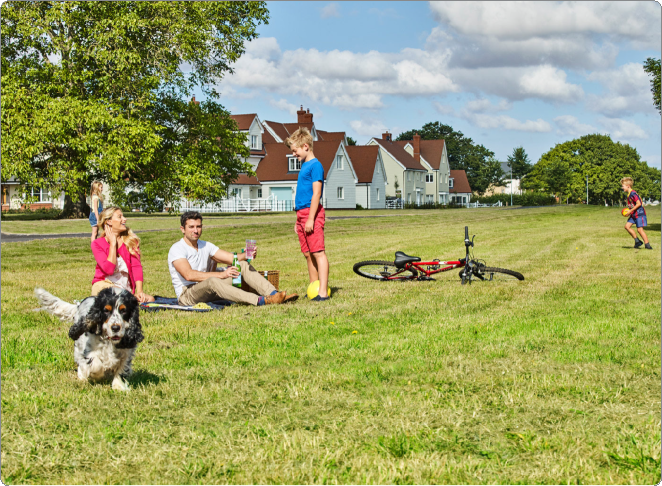Lidsing Garden Community SPD
7. Phasing and Delivery
National and local policy require the Council is maintain a deliverable supply of housing through the plan period.
7.1. Overview
7.1.1. The delivery of up to 2,000 homes at Lidsing Garden Community could take approximately 12 -15 years, and as such will continue beyond the current Local Plan period.
7.1.2. This rate of housing delivery is based on an expectation that there will be a number of separate housebuilders building out and selling units from separate outlets across the Garden Community for the majority of the development period. The Council shall encourage this, depending on the market conditions. Affordable tenure dwellings will be built in parallel across the duration of the development.
7.1.3. The pace of development will obviously depend on market conditions that prevail over an extended period. For this reason, it is recognised that the pace of build and delivery may be faster or slower than the above estimate across the lifetime of the Garden Community's development.
7.1.4. The Council will publish an Annual Monitoring Report which will detail unit completions on all Local Plan sites, including the Garden Community.
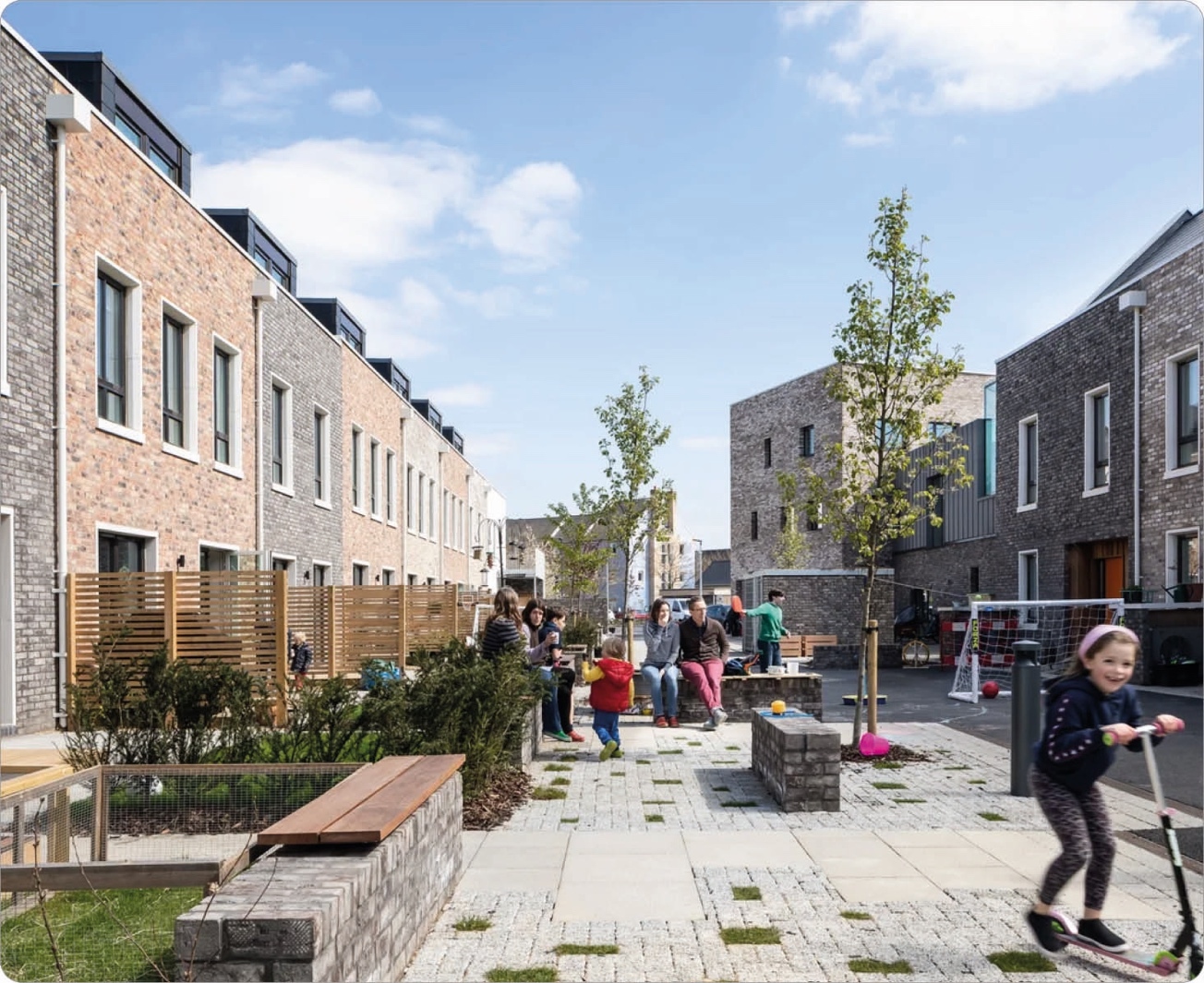
7.1.5. There are 5 character areas - that logically comprise three main phases of development – delivered from 2028 to 2042 – it is inevitable that each neighbourhood will come forward in a set of sub-phases to be determined as development proposals come forward.
7.1.6. As a result of the expected phased approach to development of the Garden Community, each neighbourhood will to some degree form a complete place in its own right, in addition to being part of a wider development. As new homes come forward, they need to be supported by the necessary infrastructure to be sustainable which compliments the wider provision in the site. A balance needs to be achieved between the delivery of new homes as well as the site wide infrastructure necessary to support place-making and sustainability.
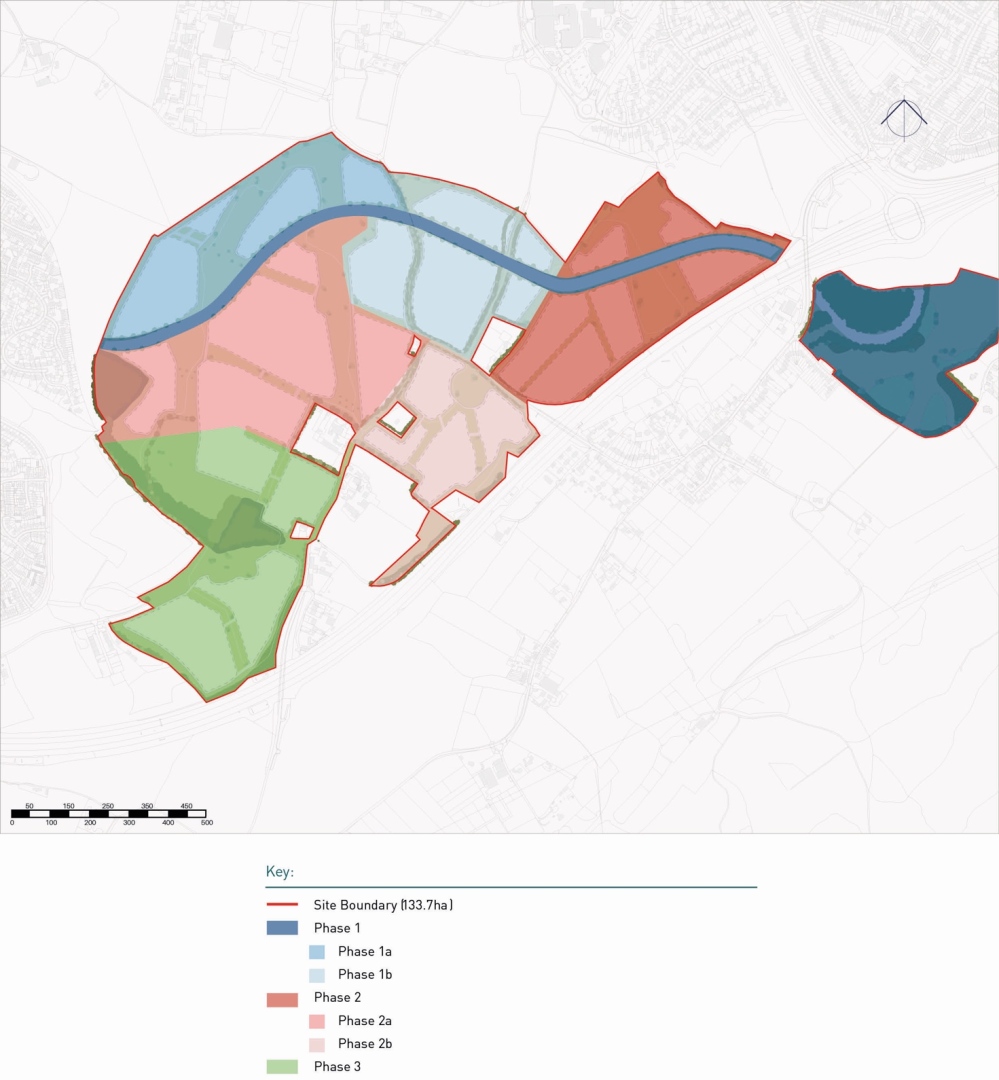
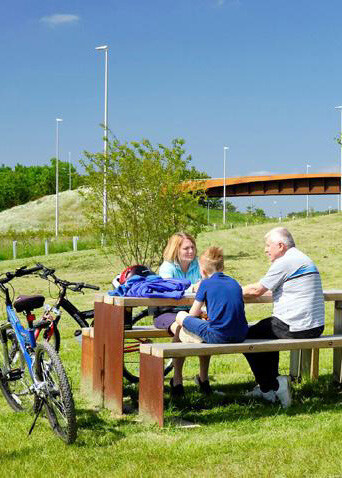

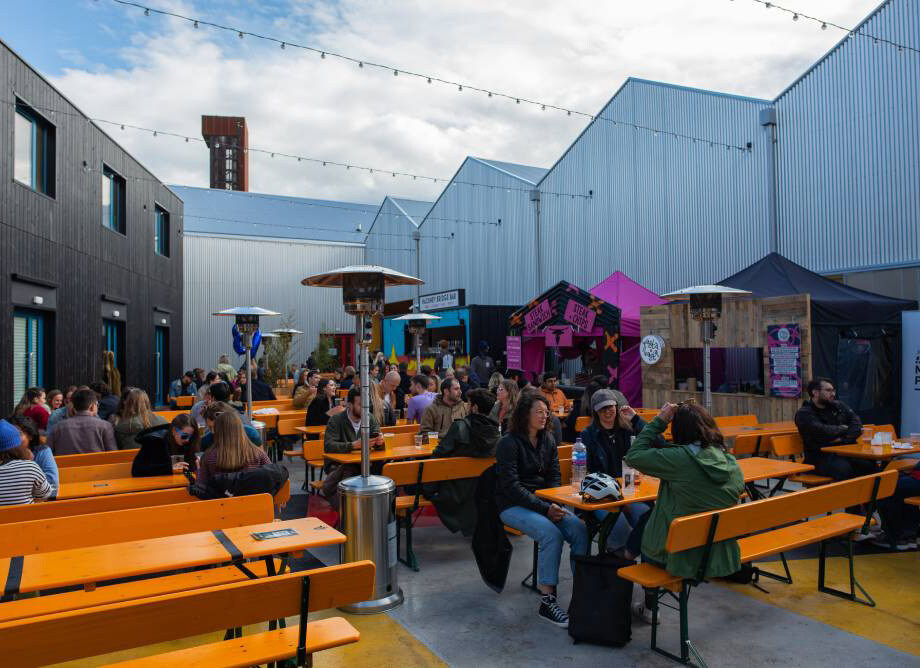
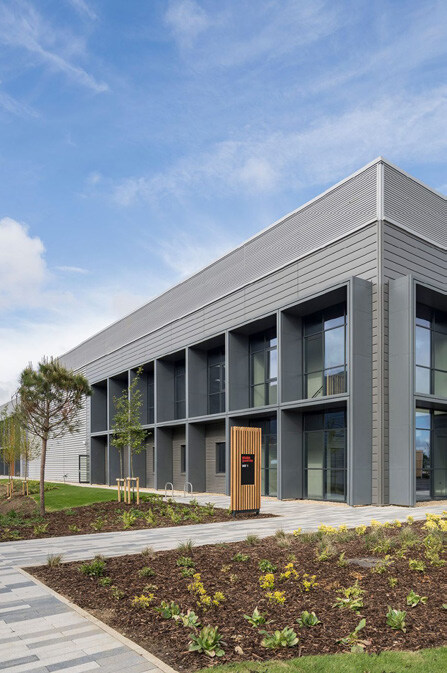
The delivery of up to 2,000 homes at Lidsing Garden Community could take approximately 12 -15 years. There are 5 character areas – that logically comprise three main phases of development – delivered from 2028 to 2042.
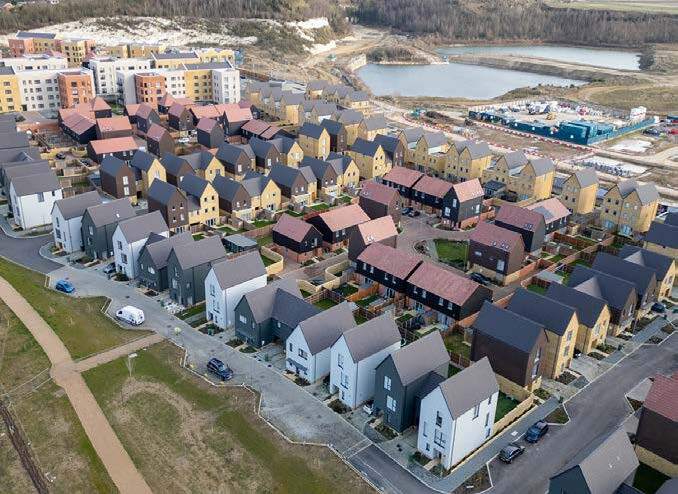
7.1.7. Local Plan Review Policy LPRSP4(b) requires a sustainable community to be developed at Lidsing, which will need appropriate planning and efficient use of land. This SPD sets out a comprehensive site-wide masterplan to achieve the Local Plan Review requirements, which will require specific principles relating to delivery, phasing and stewardship to be adhered to in order to ensure that all of the Local Plan requirements can be achieved.
7.1.8. Lidsing Garden Community is likely to come forward in the first instance through an Outline Planning Application with access details. It is likely that individual development parcels will then come forward as reserved matters applications within distinct land parcels defined by appropriate planning application boundaries.
7.1.9. All future planning applications for the site are expected to follow the phasing plan. It may be possible for phases to come forward simultaneously to speed up delivery, and in such cases, each planning application will need to demonstrate how it would ensure sufficient infrastructure delivery to facilitate sustainable and well- connected neighbourhoods.
7.1.10. Applications which are submitted relating to sections of larger parcels that do not adhere to the phasing plan will only be permitted where the applicant can demonstrate that schemes are in accordance with the allocation-wide principles and the principles set out in this SPD.
7.1.11. Proposals which would prejudice the development of a larger parcel of land or do not adhere to the established masterplanning principles will not be supported. Applications for smaller sections of larger parcels must ensure that when fully built out, the scheme will appear and function as though it were brought forward cohesively as a whole and that those individual parcels are supported by sufficient site-wide infrastructure so they can function as part of a cohesive settlement from the outset.
Key Principles/Guidance:
Phasing & Delivery
- Land parcels should not come forward that do not relate to, or are isolated from, the remainder of the development.
- All future planning applications for the site are expected to follow the Residential Phasing Plan in Figure 41 or must justify a different approach and submit a new phasing plan to the Council for consideration.
Local Plan Review Policy: LPRSP4(B), LPRSP10
7.2. Infrastructure
Infrastructure Delivery
7.2.1. Maidstone Local Plan Review 2021-2038 (adopted 2024) (LPR) sets a clear phasing strategy for Lidsing Garden Community. This is divided into three phases across the site. These phases seek to align the delivery of housing and employment with provision of 'indicative, complementary infrastructure', having regard to scheme viability.
7.2.2. In other words, the infrastructure provisions set out below have been rigorously tested with input from stakeholders and they have then been viability assessed. It is recognised that is not for this SPD to add to the financial burden of the promoters. The phases for infrastructure delivery are contained within Policy LPRSP4(A) and are set out below.
7.2.3. In addition to these five stages of delivery, a number of preliminary, 'indicative complementary infrastructure' matters are also required to be delivered. By their nature, the intention is for these to have been undertaken prior to the completion of the first residential units.
|
Phase |
Development |
Indicative Complementary Infrastructure |
|
(Phase 1) From which start date will be no later than 2028 |
Cumulative total: circa 590 homes (in first 5 years after commencement) |
• Primary connections into the site and corresponding initial bus diversions. |
|
• National Landscape – the structural planting to south of the Lidsing development area (adjacent to the motorway) will be approved as part of the SPD and later outline/hybrid application and this strategic landscaping shall be planted within this period. |
||
|
• Detailed approval of the mix of employment uses, building height and design shall be in place in line with the SPD. |
||
|
• Open space complementary to the 590 units in this phase to be delivered. |
||
|
• Proportionate secondary school contributions received. |
||
|
• During this stage the West-East link road will be completed and will facilitate the full orbital bus route. |
||
|
• Subject to Transport Assessment and Monitor and Manage Strategy, implement delivery of other supporting transport infrastructure that is necessary for this stage, including off-site junction mitigations. |
||
|
(Phase 2) From 2033 to 2038 |
Housing completions average 150 per annum |
• Completion of the M2 J4 spur, with possible interim utilisation of existing Maidstone Road bridge crossing to allow the employment development to commence early in this stage. |
|
• Subject to Transport Assessment and Monitor and Manage Strategy, implement delivery of off-site mitigations in Bredhurst and Boxley following consultation with local communities. |
||
|
• Towards the end of the stage and as necessitated by demand opening of replacement bridge crossing. |
||
|
• Ancient woodland enhancement secured. |
||
|
• Proportionate Secondary school contribution received. |
||
|
• 3FE Primary school land transferred and serviced for 3FE primary. Contributions to construct will be secured by Section 106 agreement in each phase. |
||
|
• Capstone Valley North-South open space/pedestrian enhancement completed. |
||
|
• Open space complementary to the completed residential units. |
||
|
• Employment site commenced. |
||
|
• Land transferred and serviced for new medical facility for GP surgery to be provided. |
||
|
• Subject to Transport Assessment and Monitor and Manage Strategy, implement delivery of the supporting transport infrastructure that is necessary for this stage, including off-site junction mitigations. |
||
|
By 2038 |
Cumulative total: Minimum 1,340 homes – 14ha serviced employment site delivered |
• M2 J4 National Landscape mitigation for the 19ha of land to the south of the M2 completed. |
|
• Open space complementary to completed residential units delivered and meeting wider SPD phasing. |
||
|
(Phase 3) By 2042 |
Cumulative total: circa 2,000 homes |
• Open space complementary to completed residential units delivered and meeting wider SPD phasing. |
|
• All of proportionate secondary school contributions received. |
7.2.4. Successful delivery of Lidsing Garden Community will rely on necessary infrastructure being in place at the appropriate time. This will require continuation of appropriate cooperation between the Local Planning Authority and promoters, as well as relevant infrastructure providers. The provision of transport infrastructure, for example, must be set against an appropriate 'vision and validate' and 'monitor and manage' framework as set out in Circular 01/22 and as now required by the December 2024 National Planning Policy Framework. This will require continuation of appropriate cooperation between the Local Planning Authority, Medway Council and promoters, as well as relevant infrastructure providers.
7.2.5. Collaboration around infrastructure delivery is likely to result in improved sustainability of the new development, as well as cost reductions. It is also likely to ensure delivery can take place in a timely manner and that the masterplanning requirements are met. A Planning Performance Agreement should be entered into between the LPA and promoters to help ensure a formal mechanism is in place in this regard.
7.2.6. Of note is the requirement for an east- west link road, which will facilitate a full orbital bus route passing through the settlement. This is to be completed in phase 1 of the scheme and will help ensure an appropriate, detailed masterplanning of the garden community with proper consideration of sustainable transport infrastructure.
7.2.7. In addition to the east-west link and full orbital bus route, transport provision for the garden community needs to consider the impact on the highway network both within and outside of the development. Significant modelling has already taken place in this regard and has resulted in detailed requirements being set within Policy LPRSP04(B) within the Local Plan Review. The section below entitled Transport Assessment and Mitigation provides further information in this regard.
7.2.8. Future education provision within Lidsing Garden Community will help ensure sufficient spaces are available for pupils. Land has been set aside within the masterplan for primary school provision and contributions will need to be made towards secondary school provision. Delivery requirements are set out in the phasing schedule and Policy LPRSP04(B). The matter is complicated by the fact that the settlement sits close to the boundary between Kent County Council and Medway Council administrative areas. Close working between the LPA, promoters and Education Authorities will help ensure a balance is struck between supply and demand, especially in the early years of the project.

7.2.9. Given the Garden Community's proximity and relationship with Medway and the urban area, any future application will need to robustly consider the cumulative impacts of development within the Medway Area and potential impacts on wider infrastructure, including health, sports provision and transport. These considerations should be based on the most recent information available at the time and with appropriate input from key stakeholders.
7.2.10. It is anticipated that specific triggers and thresholds for infrastructure will be defined as part of the preparation and determination of planning applications including consideration of cross border impacts particularly in relation to transport infrastructure, which may require a review to the phasing approach. This will ensure that appropriate and necessary infrastructure is in place at the time it is needed as the development is implemented.
7.2.11. To support the LPR the Council produced an Infrastructure Delivery Plan (IDP). The IDP sets out required infrastructure needed to support the growth outlined in the LPR. It sets out infrastructure required for the Lidsing Garden Community and is regularly reviewed by the Council to be an accurate record. The IDP has been used to support the development of the SPD and will support the subsequent planning applications in the future as well as engagement with the relevant infrastructure providers.
Key Principles/Guidance:
Infrastructure
- Infrastructure should be delivered in line with the phasing set out in the policy and the Maidstone Infrastructure Delivery Plan.
- An Infrastructure Delivery Statement must be provided for the development which demonstrates how the infrastructure required in the Local Plan Site Allocation will be provided, which includes:
- Off Site Infrastructure;
- Utilities, including a capacity assessment;
- Roads and transport infrastructure;
- Employment spaces;
- Digital infrastructure including high speed broadband;
- Green and blue infrastructure; and
- Community Facilities and Buildings (including Local Centre uses and education).
- One Master Developer (MD), or other appropriate coordinating party, must be established for the purposes of delivering infrastructure, working with the landowners on the site to ensure appropriate delivery to unlock sites for housing, and achieve the required build-out rates.
- All respective developers must work together from the start of the application process to assess the full infrastructure demands.
Local Plan Review Policy: LPRSP4(B), LPRSP13
7.3. Transport
7.3.1. As noted in the above section, the impact on the highway network of the proposed garden community will need to appropriately be mitigated. Guidance in this document will be supplemented by a further detailed Transport Assessment at the Outline Planning Application stage.
7.3.2. Given the very significant transport modelling work that was undertaken for the Local Plan Review, the large-scale interventions that may be required to mitigate the impact on the highway network have been identified. It is also recognised that the provision of a new spur at M2 Junction 4 represents a key component of the Lidsing scheme. This is due to be completed in phase 2 (by 2038).
7.3.3. A traditional approach to the SPD stage would include further work on these large scale interventions. However, the government has introduced a different system to this 'predict and provide' approach. The new approach of 'vision and validate, monitor and manage' helps ensure that improvements, including sustainable transport and active travel solutions can play a far greater role in transport solutions.
7.3.4. The location of Lidsing Garden Community effectively establishes it as an urban extension to the surrounding built environment of Lordswood and Hempstead. The garden community presents an ideal opportunity to maximise the amount of sustainable transport and active travel that occurs within the settlement boundary and between the settlement and its surroundings. This should include timely delivery of the east-west link and associated bus route.
7.3.5. Whilst the Lidsing Garden Community will include local facilities, the promotion of sustainable and active travel should not just be restricted to a particular area. Modes of travel, including walking and wheeling, cycling and public transport should ensure that residential and employment areas throughout Lidsing Garden Community are easily accessible. This should be supported by an approach that seeks to actively promote trip internalisation in other ways, including through the provision of community working spaces and, where appropriate, live-work units.
7.3.6. Notwithstanding the above, it is recognised that Lidsing, it's residents and businesses will co-exist with the wider area, not just the immediate vicinity. To this end, measures should recognise and mitigate against wider impacts, and this includes the wider highway network.

7.3.7. Of course, the success of the above sustainable and active travel measures will be impacted by the ease of car use within the development. Whilst it is acknowledged that a degree of private car use is inevitable within the settlement, measures should be provided to discourage private car use. This includes ways to make private car use less attractive than other travel solutions and to facilitate access to the most appropriate routes beyond the site and minimise rat running for example via Bredhurst and Boxley through street design and traffic management measures.
7.3.8. A proposed transport and movement framework accompanies this SPD and will be used as the basis for subsequent planning applications.
7.3.9. Within the IDP the following transport interventions have been set out for the Lidsing Garden Community:
- M2 Junction 4 improvement works;
- Improvement to existing bus services to serve the development;
- New bus services from the site;
- New walking and cycling routes in the site and connections to the north and south along the Capstone Valley and east and west to Medway;
- Off-site highway improvement works to the local highway network in Medway and Kent and the M2 Motorway.
Key Principles/Guidance:
Transport
- The following information is required for Vision- led transport assessment at Outline Planning Application stage. These set out the transport planning components required to underpin a planning application utilising the 'vision' led approach:
- Vision;
- Active Travel Strategy;
- Public Transport Strategy;
- Access Strategy;
- Transport Modelling Methodology;
- Monitoring and Mitigation;
- Travel Plan.
- Please refer to the separate transport annex for details in this regard.
Local Plan Review Policy: LPRSP4(B)
7.4. Developer Contributions & Funding
7.4.1. Policy LPRSP4(B) is clear that a bespoke infrastructure funding agreement should be agreed in respect of the Lidsing Garden Community.
7.4.2. The funding agreement should be based on the value captured by the development and is expected to be higher than that which would ordinarily be captured using a borough Community Infrastructure Levy (CIL) approach.
7.4.3. Maidstone has been using CIL since 2018. It currently divides the borough into charging zones. Charges apply according to development type (residential and retail). At the present time the Garden Community lies within the 'Rural Area' as set out in the CIL Charging Schedule.
7.4.4. For the avoidance of doubt, the policy position, as set out in the Local Plan Review, is clear that CIL charges should not apply to Lidsing Garden Community and this is simply because a separate, bespoke infrastructure funding agreement is required. This will allow the purposes of the policy (i.e. capturing land value uplift to a greater degree than CIL) to be fulfilled. The Council will take forward an appropriate process to remove the Garden Community site from the CIL Charging regime and enable use of S106 for proposals that come forward within the allocation. The approach to this will be set out separately by the Council and be subject to consultation and Council decision making prior to the determination of planning applications.
7.4.5. A bespoke funding agreement will also ensure the infrastructure spend is kept local to the garden community and surrounding areas, particularly Lordswood and Hempstead, where suitable. This is also set out in the Local Plan Review policy.
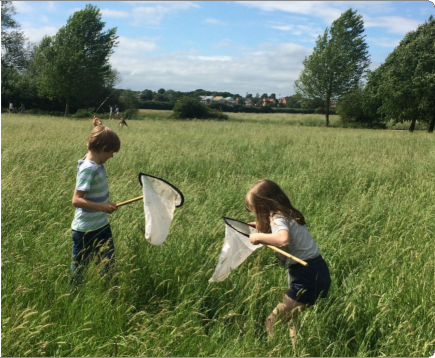
7.4.6. It should also be noted that the details of key, new infrastructure is already set out in the Local Plan Review Policy LPRSP4(B) and this is detailed in the Infrastructure Delivery section above.
7.4.7. The Local Planning Authority will continue to work with the promoters to ensure a coordinated approach to the delivery of infrastructure.
7.4.8. The use of conditions, including Grampian conditions, is considered to be the ideal mechanism to ensure infrastructure provision at appropriate phases of delivery. However, there would be additional requirements necessary to ensure compliance with the infrastructure commitments within the Local Plan Review. It is considered that Section 106 and Section 278 agreements will provide ideal mechanisms to secure this infrastructure, in the absence of the use of CIL.
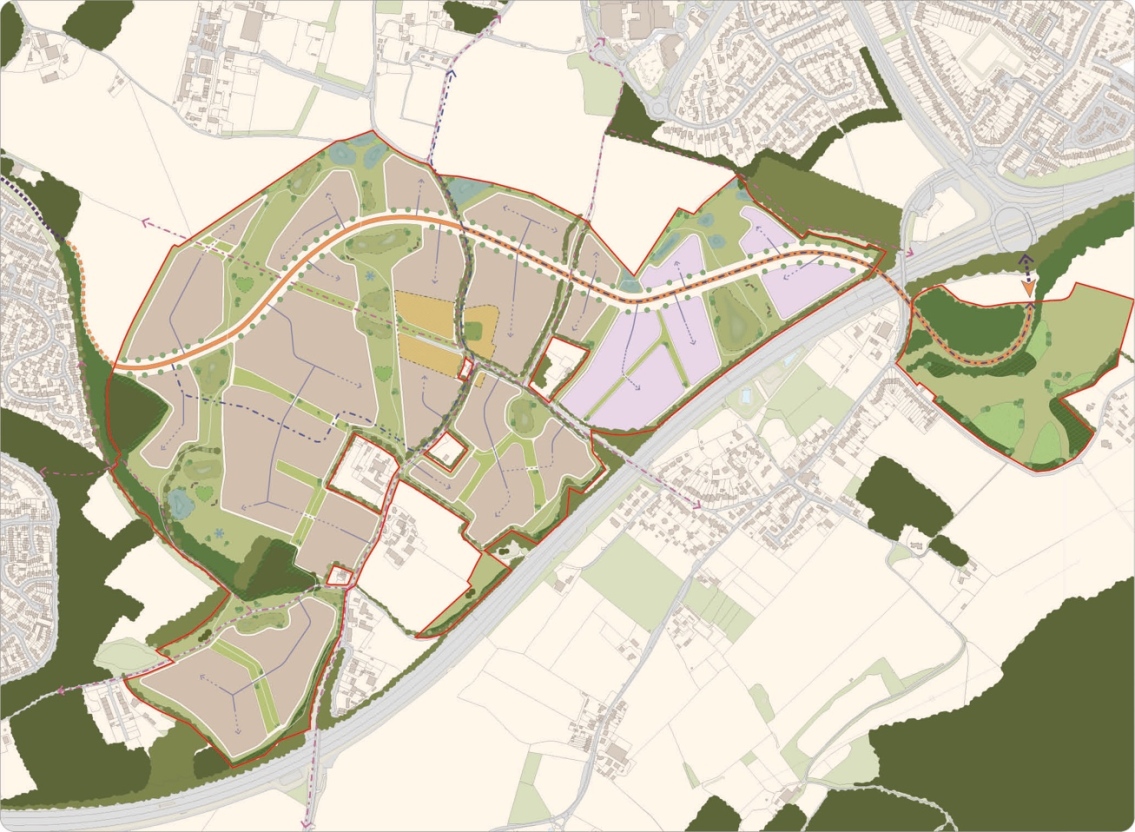
7.4.9. In accordance with the National Planning Policy Guidance, Section 106 Agreements would only be used where it would not be possible to address unacceptable impacts through a planning condition. Conditions themselves should be kept to a minimum and only imposed where they are necessary, relevant, enforceable, precise and reasonable. There are also a number of tests that will need to be satisfied for appropriate use of Section 106 agreements. These are:
- Necessary to make the development acceptable in planning terms;
- Directly related to the development;
- Fairly and reasonably related in scale and kind to the development.
7.4.10. All of these matters are to be considered as part of the forthcoming planning applications. However, a list of key infrastructure and the mechanism to be used to secure its delivery is provided in Appendix A.
7.5. Governance & Stewardship
7.5.1. Policy LPSRSP4(B) sets out that establishing appropriate long term governance arrangements will be crucial to achieving the overall vision for the Garden Community. This must consider how the Garden Community and its community assets will be managed by and for the local community. Stewardship is the term for the long-term management of such assets.
7.5.2. The Council considers that stewardship also includes the development of the Garden Community as an inclusive, successful and healthy place where residents are encouraged to interact through the design of community infrastructure and the provision of community development activities such as organising events and establishing clubs and interest groups.
7.5.3. A principal objective of an appropriate stewardship body will be to build a strong and vibrant community where residents and others who work or use the area, share a strong sense of belonging, pride and commitment to its future and well-being.
7.5.4. It is anticipated that a broad range of community assets including public open space, parks, play areas, allotments and community buildings along with their maintenance liabilities would be owned and managed by an appropriate stewardship body. The community buildings will be at the core of the local centre, built and transferred fully fit for purpose with revenue support until viability is achieved.
7.5.5. There are numerous potential stewardship models available, and it is important for the long- term development of the Garden Community that stewardship starts to be considered early on. The preferred solution for stewardship arrangements will need to be set out and agreed as part of the consideration and determination of future planning applications for the site.
7.5.6. The potential scope of roles and responsibilities for stewardship at the Garden Community fall within two main categories of 'Community Assets' and 'Placemaking' as summarised in the table below:
Figure 47: Potential Stewardship Responsibilities
POTENTIAL STEWARDSHIP RESPONSIBILITIES
Community Assets
Community Development
- Public Realm
- Engagement
- Local Parks
- Community Events
- Play Areas
- Arts and Culture
- Green Corridors
- Community Development
- Community Centre
- Community Cohesion
- Food Growing/Allotments
- Work and Skills
- Heritage
- Covenant Enforcement
7.5.7. An appropriate approach will need to evolve through collaboration between the developer, Maidstone Borough Council (with Kent County Council), local Parish Councils (Bredhurst Parish Council and Boxley Parish Council), and other relevant stakeholders, and will be secured through planning conditions or planning obligations attached to planning permissions.
7.5.8. It is anticipated that Developer contributions will be required to fund the initial set up and running costs, including staff, premises, and equipment costs. This support will need to be provided until such time as stewardship activities are financially self-sustaining.
7.5.9. The consideration and evaluation of options leading to a preferred approach should be set out within a Stewardship Strategy, that establishes the scope of the stewardship and community governance arrangements, and sets out how they will evolve over time, as well as the financial sustainability of the arrangements proposed.
7.5.10. The strategy should include any community development activities to support the establishment of a successful new community development early on. For example, initiatives to support the establishment of community walking, running and cycling activities and to support sports club development.
7.5.11. The focus of the Stewardship Strategy is on developing an appropriate organisation that effectively manages the open spaces, community facilities, and responds to the needs of the local community to build a thriving community.
7.5.12. It is anticipated that the Strategy will need to be delivered in stages and as the Garden Community increases in terms of overall scale and population.
Key Principles/Guidance:
Governance & Stewardship
- An appropriate approach to stewardship should ensure that the quality of place and services delivered are exemplar and provide great places to live, work, visit, and play.
- The legal form of an appropriate stewardship body will need to be determined through consultation with all relevant stakeholders.
- The approach should be adaptable and follow an incremental approach, recognising the long-term undertaking in terms of creating a new Garden Community in this location.
- The approach should ensure that a broad range of community assets such as open spaces and community facilities are well maintained in perpetuity and for public benefit of all those who live, work in or visit the area including existing local residents from surrounding communities.
- The approach should develop a strong sense of community, both within the Garden Community and between the surrounding settlements, through effective communication and community development activities that are in place from first occupation.
- Community assets should be held in perpetuity in community ownership and managed for the benefit of the local community, both those resident within the Garden Community and those from surrounding communities who will use and benefit from the assets.
- Local residents and business should be directly engaged in the long-term management of the community assets, fostering a shared sense of ownership and identity.
- Being financially sustainable: the stewardship body will need to be financially viable and self-sustaining over the long-term with secure income streams. If and where service charges are required, they will be set up and enforced in an equitable way with local control over the management of the system.
- Being accountable and well-governed: any stewardship body must ensure open, transparent and accountable governance with the community having the ability to exercise influence and control over stewardship decisions and delivery.
Local Plan Review Policy: LPRSP4(B)
7.6. Planning Application Process
7.6.1. To ensure comprehensive and complementary development it is expected that development proposals come forward for the Garden Community in its entirety via a site wide outline planning application. This will establish the overall scope and scale of development and a set of design and development parameters, such as access, the disposition of land uses and scales of proposed built development.
7.6.2. Applications for smaller parts of the allocation will generally not be permitted unless applicants can clearly demonstrate that any individual proposals are in accordance with an agreed site-wide masterplan, which takes forward the spatial principles set out in this SPD. In order to ensure a comprehensive approach is secured the Council would also need to be satisfied that a collaboration agreement (CA) has been entered into by all relevant landowners (if applicable) to provide reassurance that delivery of all key parts of the Garden Community are capable of being brought forward in a comprehensive manner.

7.6.3. Policy LPRSP4(B) also requires a design code to be part of any future planning application as per criteria 3(b). This is expected to come forward following the outline planning application and prior to the reserved matters applications.
Pre-Application Working
7.6.4. In accordance with NPPF Guidance, the Council recommend that for any substantive planning application for development, the applicant should enter into pre-application discussions (and to be secured via a Planning Performance Agreement) in order to ensure that the strategic objectives and wider spatial vision of the Garden Community can be achieved. This would also serve to improve both the efficiency and effectiveness of the planning application process.
7.6.5. Pre-application engagement with the local community and relevant local stakeholders is also strongly encouraged, in accordance with National Planning Guidance. There are a wide range of techniques and methods available to engage the community. Applicants must also especially consider means to reach those sectors of the community that are difficult to engage and/or whose views are often under-represented or seldom heard, sometimes referred to as 'hard to reach' groups. The results of the engagement should be summarised in a Statement of Community involvement to be submitted as part of any planning submission.
7.6.6. Additionally, the applicant is encouraged to engage directly with any relevant statutory consultees, including Medway Council, National Highways, Historic England, Natural England, the Environment Agency (as relevant), Sport England and others as appropriate.
7.6.7. To support the assessment of any phase of development against the objectives and principles outlined in this SPD, any planning application within the Garden Community must be supported by the plans and reports set out at Appendix B. This list assumes the submission of a site wide outline planning application. In the event that a hybrid or detailed planning application is to be submitted, the specific advice of the Local Planning Authority should be sought.
7.6.8. The Government's National Planning Practice Guidance sets out information on planning applications which should be referred alongside additional information provided on Maidstone Borough Council's planning webpages.
7.6.9. The submission of a valid application for planning permission requires:
- A completed application form;
- Compliance with national information requirements;
- The correct application fee; and
- Provision of local information requirements.
7.6.10. For a site of this scale and complexity, a bespoke set of supporting documents will be required to fully address all related issues and assessments. Appendix B sets out an initial indicative checklist of anticipated material that will be required. Applicants should refer to the latest national and local requirements prior to submission. The Council also encourages applicants to use its Pre-Application Advice Service.
Q32: Do you agree with the principles & guidance for ‘Section D: Delivery Framework’? Comment
Q33: Please set out any changes that you think should be made to Section D: Delivery Framework. Comment
Q34: Do you have any other comments on the Draft Supplementary Planning Document? Comment
Q35: Do you have any comments about how easy the document is to use and understand or what improvements could be made? Comment

